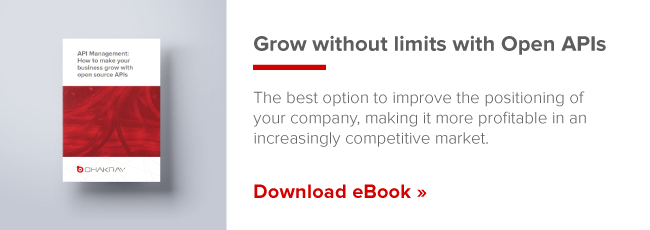The API (Application Programming Interface) and the Cloud have evolved to be key components in the process of digitizing business organizations. With them, it is possible to develop new and often disruptive business models and services in an agile way. Also the improvement of the customer experience. Computer systems and applications of many different types have benefited from logical architecture and the design and implementation of interoperable software components.
In addition to this reference model, cloud computing has been added, an open door to the formation of networks of developers working together and generating synergies. Both APIs and cloud computing are powerful tools to improve the marketing of all kinds of services and products. The question now is how to speed up these processes as much as possible and how to achieve this as efficiently as possible.
How to establish optimal speed in business processes with API and Cloud
Setting an appropriate API strategy
The period of time that passes from the moment a service or product is conceptualized until it is already on sale, that is, its commercialization, is key to any business model. The APIs have a lot to say about that. To this end, the strategy to establish which is the right one must give priority to being scalable and flexible, consistent, agile, simple in its use and with the right level of security.
This means that these aspects must be taken into account during the process of defining and developing the IPR. It is also key to consider the environment in which the API will run. Cloud computing has a lot to say in this field, since it provides the agility needed to compete with companies that have already been born with the development of new marketing strategies based on technology and digitalisation. Examples are the fintech companies or many ecommerce retail businesses.
Implementing the right infrastructure with Cloud
Having a platform that is based on cloud computing, which has high performance and availability, and which is also scalable, means a significant advantage in building a competitive infrastructure. To achieve this, an iPaas (Integration Platform as a Service) can be used to help shorten the time to market of the service or product.
The solutions answered by the APIs
How to exercise control, what functionality is exposed, and how to make it easy to use for different types of users are three basic questions about APIs that need to be answered. The requirements go through the API Gateway, the API catalogue or the API portal. The first is the nucleus from which fields relating to the application of policies and service level agreements, access controls, security or consumption registration are managed.
The API catalogue makes it easy to manage the development of this tool, from the use of different versions to the documentation of its functionality and interface. Finally, the API portal serves as a bridge to meet users, or potential users, interested in taking advantage of a company’s API offer, understand its use and learn how to manage it, or also ask for the passwords in each case to access and that results in the security of the entire operation.








